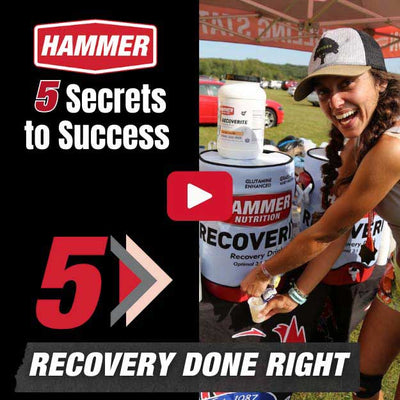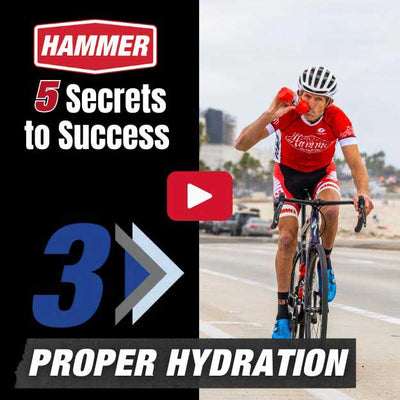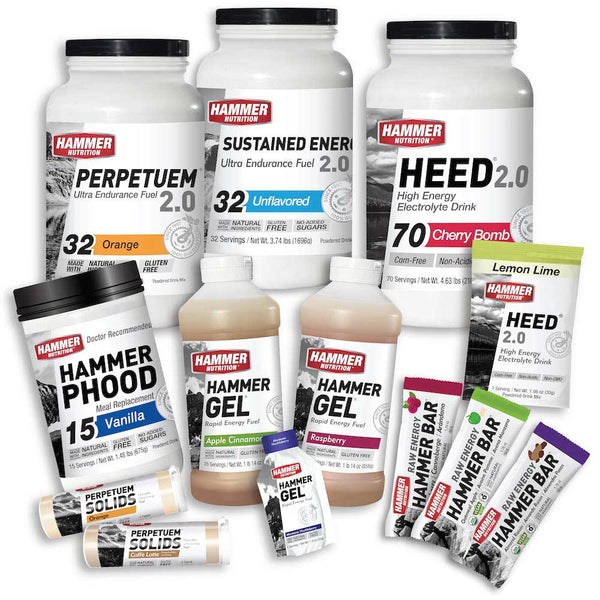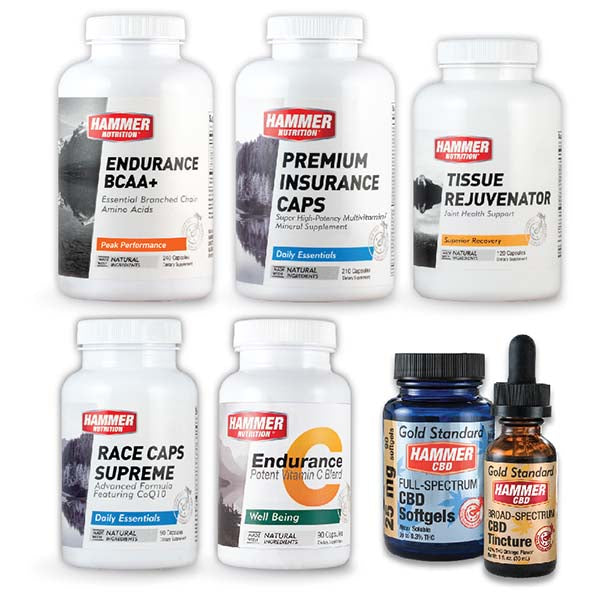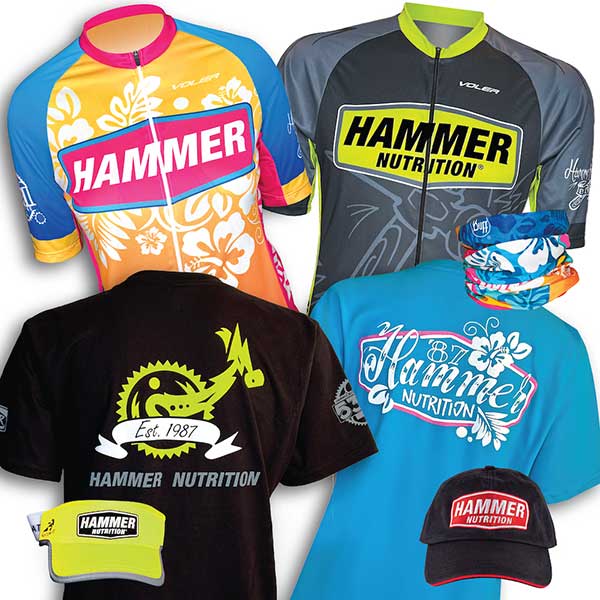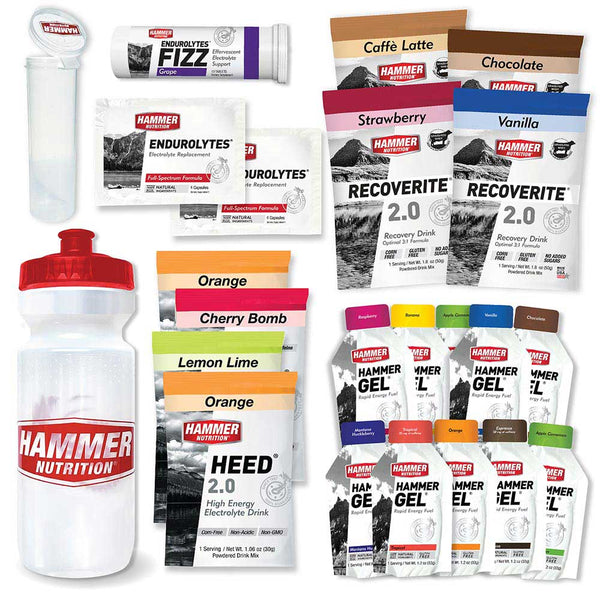Resupply these vital minerals to finish strong
Our Recommendations
To keep your body functioning smoothly through a long workout or race, replenish the full spectrum of electrolytes consistently and completely.
Note: Extreme conditions may warrant higher levels of electrolyte replenishment.
Electrolytes are like the motor oil in your car: they don’t make the engine run, but they’re absolutely necessary to keep everything operating smoothly. Just as you wouldn’t wait for your engine to seize before you top off the oil, don’t wait to cramp up before you replenish electrolytes. Long before you cramp, your output will suffer from mineral depletion.
ELECTROLYTES 101
The goal of electrolyte replenishment is smooth, uninterrupted, uncompromised performance. Without the proper levels of electrolytes, your body can’t carry out critical body functions such as muscle contractions, normal heart rhythms, and nerve impulses, all of which are critical for performance and health.
SALT TABLETS ARE NOT THE ANSWER
Salt tablets are an unacceptable choice for electrolyte replenishment for two important reasons:
1. They can oversupply sodium, overwhelming your body’s ability to regulate electrolyte and fluid balance.
2. They provide only two electrolytes, sodium and chloride, when your body requires many types of electrolytes.
Your body has very effective mechanisms for monitoring and conserving its stores of sodium. Consuming excessive amounts of sodium interferes with this natural process. If your body detects a drastic increase in sodium from outside sources (salty food or electrolyte products too high in sodium), your body will stop filtering and recirculating sodium and instead begin purging the excess. The immediate results of this are swelling and elevated blood pressure, with extreme cases resulting in lethargy, muscle weakness, seizures, and even death.
SKIP THE SALTY FOODS
A similar process occurs if your diet routinely includes high levels of sodium. Consistently consuming excess sodium encourages the body to routinely dump sodium. If you’re consuming more than 2,300 milligrams per day, sodium loss during activity will be increased, increasing your risk of cramping and the need for electrolyte supplementation.
By building your diet around natural, unprocessed foods, you will consume sufficient sodium without interrupting your body’s natural regulatory processes. The average person stores 8,000 milligrams of dietary sodium in body tissues. Reducing sodium in your diet and replenishing sodium levels during exercise with the minimum amount necessary will enable your system to make the best use of your stores. Attempting to “sodium load” prior to activity triggers your body to rapidly dump it during exercise, perpetuating a cycle of high-sodium consumption and expenditure.
FULL-SPECTRUM ELECTROLYTE REPLENISHMENT
Proper electrolyte replenishment requires a consistent approach that properly balances all the necessary minerals—not just “salt.”
Endurolytes are designed to meet your body’s complete electrolyte requirements, which include sodium, chloride, potassium, magnesium, calcium, and manganese. These minerals help counter the effects of overheating, optimize bodily functions, and enhance performance, especially for activities that last longer than two hours.
We don't formulate Endurolytes to reflect the amount of electrolytes lost through exercise. As sweat loss varies greatly from person to person and depends on climate, there is no “one size fits all” approach to replenishment. It is essential that you correlate your dosing to dietary habits, the climate, and active temperatures.
When selecting your dosage, it is important to remember that the human body can assimilate only about 1/3 of the electrolytes it loses during exercise. Trying to replace more than this could cause gastric distress, edema, muscle spasms, cramping, and a host of other performancewrecking symptoms.
Hammer’s Endurolytes products help your body maintain proper electrolyte levels regardless of conditions or duration of exercise. They allow your body to perform better, especially in heat, by providing a full range of minerals in a proper balance that helps the body's normal control systems perform.
BOTTOM LINE
Salty Foods and salt tablets won't cut it when it comes to electrolyte replenishment. Instead, adopt a low-sodium approach in your daily diet with mineral-rich whole foods. During exercise, provide your body with comprehensive electrolyte support without compromising internal regulation.
COMPLETE Electrolyte Support
Salt tablets provide only two of the electrolytes your body requires. Endurolytes® provide the full spectrum, with complementary micronutrients. Precisely formulated without excess salt, refined sugars, or artificial ingredients, our full-spectrum electrolyte products support peak performance in the toughest conditions.
Calcium: Necessary for normal heart rhythm, healthy nerve transmission, and strong muscle contractions. During exercise, calcium-dependent enzymes produce energy from fatty acid and amino acid conversion.
Chloride: Critical for maintaining a proper balance and consistency of body fluids and electrolytes.
Manganese: Trace amounts help convert fatty acids and protein into energy.
Sodium: The average athlete already has a vast store of available sodium, so consuming excess amounts can cause serious problems. Endurolytes contain moderate amounts of sodium for proper replenishment.
Magnesium: Required for many of the enzymatic reactions for converting fuel to muscle energy.
Potassium: Needed for optimal concentrations of sodium.
